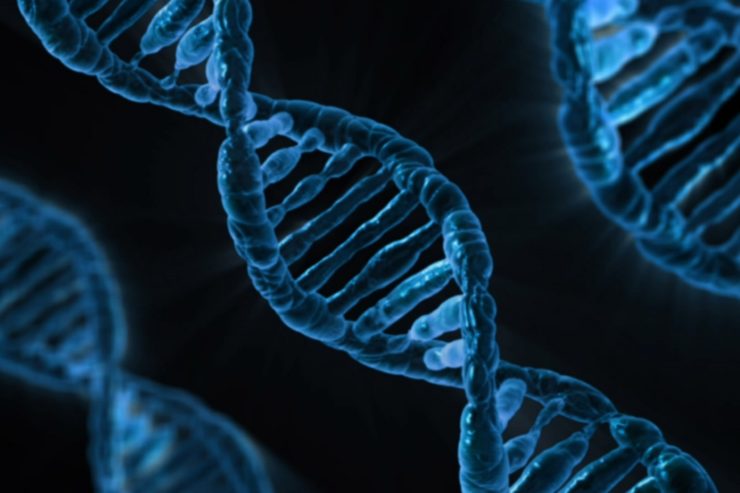We love to tinker with our environment, especially with other life forms. We try to change them to suit our needs, using every tool we can find or invent. Science fiction goes one step further, imagining tools we haven’t invented yet and doing things that don’t seem possible. Yet sometimes science fiction’s impossible dreams have echoed real-life tinkering—even when our imaginations birthed nightmares…
We could say genetic engineering started in 1926 when Thomas Hunt Morgan discovered the role chromosomes play in heredity. Or in 1953 when James Watson and Francis Crick (with Rosalind Franklin) described the double-helix structure of DNA.
I contend that we actually started genetic engineering thousands of years ago using selective breeding. Since Mesolithic times, we’ve successfully changed plants and animals in profound ways. We didn’t know why it worked, but we knew we had the power to transform life, and we never stopped using that power in real life or in our imagination.
Here are seven ways sci-fi writers correctly predicted what genetic engineering could do:
We will make monstrous changes in animals

H.G. Wells wrote The Island of Doctor Moreau in 1896, describing ghastly combinations of animals with other animals, and of animals with humans. He was inspired in part by the horrors of vivisection, an important social issue of his time. In the novel, Doctor Moreau creates chimeras, or cross-species combinations, including bear-dog-oxen, hyena-swine, mare-rhinoceros, ape-man, leopard-man, swine-man, swine-woman, wolf-man, wolf-woman, and dog-man through brutal surgeries. Eventually it all leads to disaster.
In our own time, using the full powers of genetic engineering, we’re combining animals, such as mouse-rat, sheep-goat, chicken-quail, and human-pig. Most recently, Tao Tan, a biologist at Kunming University of Science and Technology, with the help of a large team, made part-monkey, part-human embryos. What could possibly go wrong? We’ll find out.
(Just to be clear, a turducken is not the result of genetic engineering. It involves culinary engineering.)
We will make monstrous changes: the sequel

In 1990, Michael Crichton brought dinosaurs back to life in Jurassic Park, and the plot hinges on a fictional misjudgment in the genetic engineering. Gaps in dinosaur genes are spliced with reptilian, avian, or amphibian DNA. To control the dinosaur population, only females are bred, but it turns out that frogs can sometimes change from female to male. Oops. Those and other errors mean the dinosaurs eventually escape.
Crichton was inspired by genetic engineering, still new in 1990, but we’ve done amazing things in the past with selective breeding. About 9000 years ago, people in what is now southern Mexico began to experiment with a kind of grass called teosinte.
It protects its seeds with a hard casing. Ancient agriculturalists slowly rebuilt it into maize (corn). The seed casings became the central cob, and the luscious seeds were exposed to predators like us.
Another example: around 23,000 years ago, we started changing wolves into dogs. Now we’ve gone so far as to make miniature chihuahuas. These may not be actual monsters, but tiny chihuahuas and corn on the cob illustrate what horrors we could create if we tried. Even simple genetic tools hold great power, which comes with great responsibility.
Genetic engineering will be dehumanizing
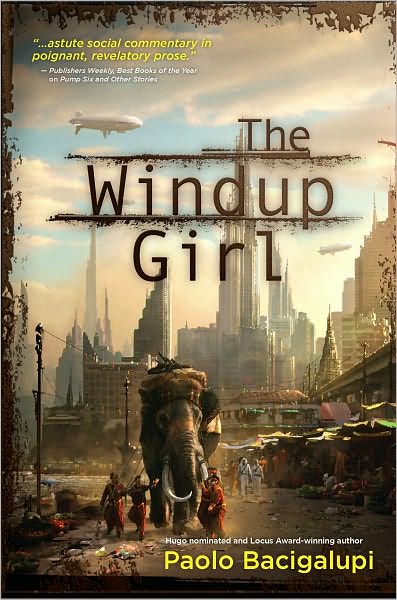
This is a common theme in science fiction. The Windup Girl by Paolo Bacigalupi is a good example. The “windup girl” is not a human. She’s one of the New People, engineered and creche-grown, considered soulless beings, perhaps devils. They toil as slaves, soldiers, and toys.
We can easily accept the novel’s premise because in real life, we’ve tried many times to define some people as more human than others on the basis of such differences as skin color, gender, religion, or national origin. Every time, disaster followed.
In general, we haven’t tried genetic engineering on human beings, but one instance of reverse engineering stands out. The dangers of inbreeding have long been understood, but greed can overcome good sense. During Renaissance times, the House of Habsburg in Europe intermarried to hold onto power, eventually resulting in King Charles II of Spain (1661-1700). He was so inbred he could barely eat, speak, or walk. That mattered little. He was a thing to occupy a throne, providing other people with agency. The institution of royalty itself might be dehumanizing.
Accidents won’t always be bad
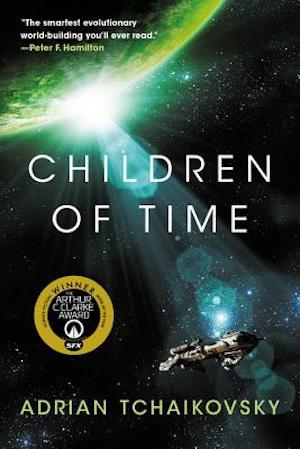
In Adrian Tchaikovsky’s 2015 novel Children of Time, various creatures are accidentally genetically uplifted, in particular spiders. The spiders slowly evolve in intelligence and become heros, willing to fight to protect the weak and to risk their lives to save others—big, arachnophobia-inspiring heros. In the meantime, humans engage in continued, senseless self-destruction. We don’t seem to be the smartest species in the story.
In real life, we also stumble into lucky accidents. People in Mesopotamia domesticated sheep at least 10,000 years ago for meat, but the change to the gene that made the animals more docile also had an unanticipated side effect. It made the fleece start to crimp.
Soon, it could be spun into wool. As a result, 6,000 years ago, Babylonians were wearing woven woolen clothing as a proud sign of civilization.
Genetic engineering will have great potential for evil
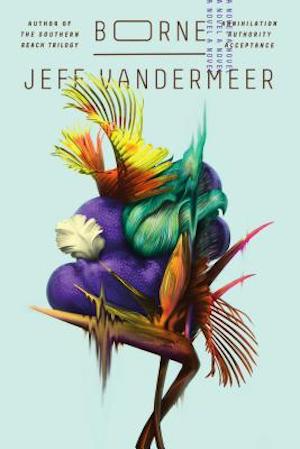
In the 2017 novel Borne by Jeff VanderMeer, a city is destroyed by genetically engineered monsters, half-creatures, and ambiguous beasts. Giant flying bears, strange anemone-like blobs, compost worms, memory beetles, and other creatures populate this horrible future. The disaster—a Collapse worthy of a capital C—was birthed by unhinged corporate avarice.
In our own consensus reality, corporate involvement in genetic engineering has generated all kinds of controversy, but I want to point to one instance in which corporate avarice is beyond debate. Tobacco companies have genetically engineered tobacco to be more addictive. Mic drop.
Genetic engineering will have great potential for good
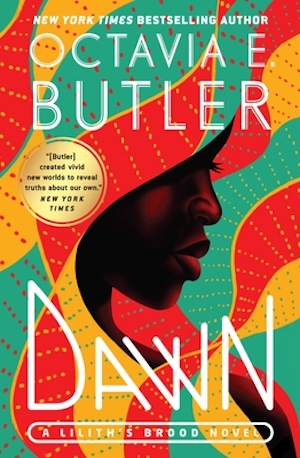
Success can be harder to write than dystopia, so Lilith’s Brood by Octavia E. Butler, published in 2000, needed three novels to reach a happy ending. Eventually, humans and an alien species called the Oankali find ways to live together—really together. Along the way, the trilogy explores complex themes related to genetic engineering, such as identity, social integration, power, and eugenics.
In our own lives, we have a current example of genetic engineering doing good: the Pfizer and Moderna vaccines against Covid-19 are saving lives. They use a specific kind of mRNA that makes a few of our cells reproduce the Covid spike protein, a specific fragment of the Covid virus. When our immune system sees those spikes, it builds antibodies and T-cells to fight them. The vaccine doesn’t re-engineer our DNA, but the science behind genetic engineering provided the knowledge base for the very rapid development of the vaccines. (I’m team Pfizer.)
Genetic engineering will pose a clear and present danger

Many science fiction stories portray disaster, including the 2003 novel Oryx and Crake by Margaret Atwood. It shows how uncontrolled genetic engineering can destroy humanity—intentionally.
Right now, our technical ability to deliberately create a harmful organism, microorganism, or virus seems limited, but sooner or later we will have that power. What are we doing about it? So far, 183 countries have signed the Biological Weapons Convention, which bans the use of disease-causing organisms or toxins to harm or kill humans, animals, or plants. Signatory countries are required to control the actions of corporations and research organizations under their jurisdiction. Good luck with that. Meanwhile, non-state actors, such as terrorist groups, have little incentive to sign this sort of agreement.
We can barely control other kinds of weapons of mass destruction. Fully 191 countries have signed the Treaty on the Non-Proliferation of Nuclear Weapons. Four of the countries that did not sign either have nuclear weapons or want them, and one signatory country is currently in non-compliance. Worse than that, about 3,750 nuclear warheads are active right now, and 1,800 remain in a state of high alert.
Given our minimal success with controlling nuclear weapons, we might want to think harder about biological weapons. Even very simple biological engineering techniques have reshaped our world. We now possess advanced engineering, and only its technical difficulty has kept us safe so far. It will get easier to use. Science fiction has long been warning us that time is running out, and even its wildest ideas keep coming true.
Sue Burke spent many years working as a reporter and editor for a variety of newspapers and magazines. She is a Clarion workshop alumnus, and she has published more than 30 short stories. Burke also worked extensively as a literary translator, and while living in Madrid, Spain, she headed the long-running Madrid Writer’s Critique Group. Her translations include the fantasy novel Prodigies by Angélica Gorodischer, the bilingual science fiction anthology Castles in Spain / Castillos en el aire, and the script for the science fiction movie Mindgate. Sue Burke is the author of the novel Immunity Index.










